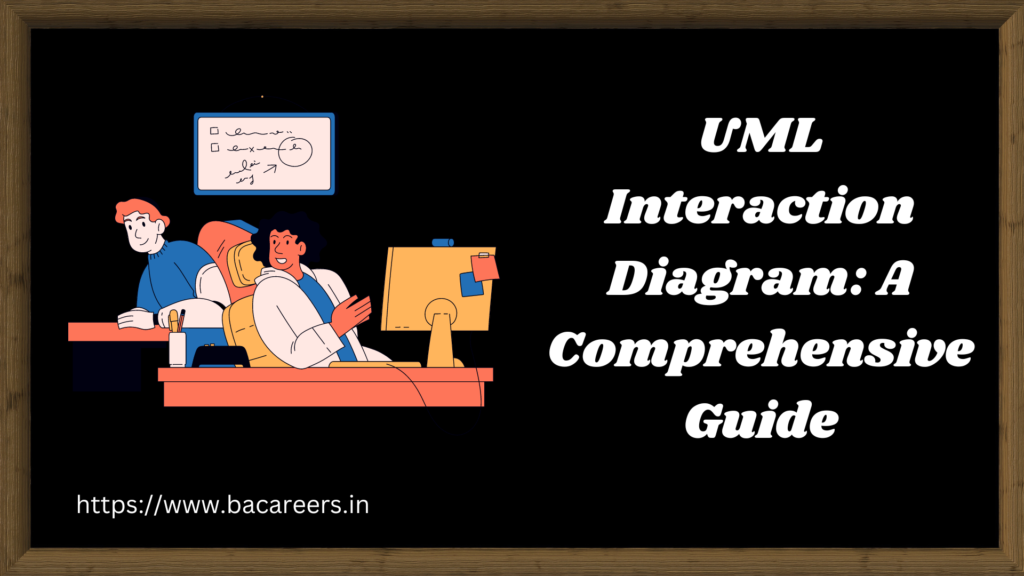Unified Modeling Language (UML) stands as the cornerstone of modern software development, offering a standardized approach to modeling systems. Among its diverse set of diagrams, UML interaction diagrams hold a special place, facilitating the visualization and understanding of dynamic interactions within a system. In this article, we will delve into the intricacies of UML interaction diagrams, explore their types, provide examples, and clarify their distinctions from other diagram types, notably sequence diagrams.

Understanding UML Interaction Diagram:
UML interaction diagrams capture the dynamic behavior of a system by illustrating how objects interact with each other over time. They primarily focus on the flow of messages between objects and emphasize the sequence of interactions rather than the system’s structure. Two main types of UML interaction diagrams exist: sequence diagrams and collaboration diagrams.
Sequence Diagrams: Sequence diagrams, perhaps the most widely used type of UML interaction diagram, depict the chronological flow of messages exchanged between objects within a system. They showcase the order in which interactions occur, along with the lifelines of participating objects. Lifelines represent the existence of objects over time, and messages are depicted as arrows between lifelines, indicating communication.
Example:
Consider a simple scenario of online shopping. A sequence diagram for this scenario might show the interaction between a customer, a shopping cart, and an inventory system. The sequence might begin with the customer adding items to the cart, followed by the system updating the inventory and calculating the total price. Finally, the customer proceeds to checkout, completing the transaction.
Collaboration Diagrams: Collaboration diagrams, also known as communication diagrams, provide a visual representation of the interactions between objects within a system. Unlike sequence diagrams, which emphasize the temporal ordering of messages, collaboration diagrams focus on the relationships between objects and the messages exchanged. Objects are represented as nodes, and messages are depicted as links between these nodes.
Example:
Continuing with the online shopping scenario, a collaboration diagram might illustrate the relationships between the customer, shopping cart, and inventory system. The diagram would showcase how these objects communicate with each other, highlighting the flow of information and control within the system.
Interaction Diagrams in UML at GeeksforGeeks:
GeeksforGeeks, a popular platform for computer science resources, provides comprehensive tutorials and examples on UML interaction diagrams. Their articles offer in-depth explanations, code snippets, and visual representations to help learners grasp the concepts effectively. By following their tutorials, enthusiasts can gain a solid understanding of UML interaction diagrams and their practical applications.
Interaction Diagrams vs. Sequence Diagrams:
While interaction diagrams and sequence diagrams both fall under the category of UML diagrams and share similarities in visual representation, they serve different purposes. Interaction diagrams, including both sequence and collaboration diagrams, focus on illustrating the interactions between objects within a system. Sequence diagrams specifically emphasize the chronological ordering of messages, whereas collaboration diagrams emphasize the relationships between objects and the messages exchanged.
In conclusion, UML interaction diagrams serve as invaluable tools for modeling and understanding the dynamic behavior of systems. Whether through sequence diagrams or collaboration diagrams, developers can effectively communicate and analyze the interactions within their software designs. By mastering these diagrams and utilizing resources like GeeksforGeeks, software professionals can enhance their modeling skills and contribute to the creation of robust and efficient systems.
Important Articles :
- How to create Activity Diagram: A Comprehensive Guide
- Navigating Activity Diagrams: A Comprehensive Guide
- A Guide to Create an Activity Diagram : Streamlining Processes for Success
- 10 Examples of Activity Diagram in Software Engineering
- The Essential Guide to BRD Template : Streamlining Project Requirements

Business Analyst , Functional Consultant, Provide Training on Business Analysis and SDLC Methodologies.
